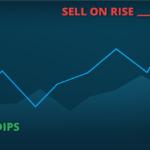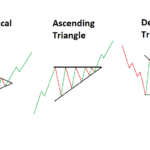The efficient marketA location or entity where people and entities can negotiate and trade assets of value. hypothesis theory is one of the oldest concepts for assessing stock market conditions and the price of an assetA stock, commodity, currency, index or any other entity one may trade or invest in. – primarily as regards to stocks or indices.
Abbreviated as EMH , the efficient market theory was first modeled in the mid-19th century by a French stockbroker, Jules Regnault, and then in the early 20th century by a French mathematician, Louis Bachelier.
It was further developed by Eugene Fama in the University of Chicago in the early 1960s and has been disputed for several decades, as theory says that it is impossible to beat the market.
EMH theory states that a stock price reflects all available information. According to the theory, stocks always trade at fair value in the market. This makes it impossible for an investor to buy an undervalued stock or sell an inflated stock.

Therefore, an investor should not be able to outperform the market unless he/she trades in extremely risky stocks or under extremely risky conditions.
Three types of EMH
There are three types of theory: Weak, Semi-strong, and Strong. Each type has varying levels of information and sources to back it up.
- Weak form of efficiency states that past information does not predict future values of the stock. Therefore, using technical analysisA technique of forecasting the direction of prices by studying past market behaviour using primarily... is pointless since predicting the price of the stock is not possible. Fundamental analysisThe study of an asset’s inherent value. Current affairs and economic data may influence the value ... can be used, however, only for the short-term, and will not work for the long term.
- Semi-strong form efficiency suggests that neither fundamental, which uses current
public information to forecast the stock price, nor technical analysis, which
relies on past information to forecast a stock price, is relevant in predicting
a high returnThe benefit one receives on an investment. because the stock price adjusts quickly to new public information.
However, insider information might give an investor an advantage. Investors relying on this method cannot expect a high return on investmentAn asset (usually money or work) provided to another in expectation of receiving a cash return or be....
- A strong form of efficiency believes that a stock price reflects all the historical data, past trends, relevant latest information as well as insider information. It is impossible to earn an excess return by any means. Like with semi-strong form, neither technical nor fundamental analysis will work.
Conclusion: Anomalies and Criticism.
Efficient Market Hypothesis has a few anomalies. Some of them are the calendar effect, post-earnings-announcement drift, momentumThe strength of a trend. Its corollary is the pace at which the value of an asset changes. effect, and value effect.
Warren Buffet, in his article The Superinvestors of Graham and Doddsville has rejected the theory. Other investors agreed with him. First, there is no unified way to look at the stock.
Since different investors evaluate stocks differently, it is impossible to say what is a fair market price for a particular stock. Second, if all investors have the same information, and invest the same amount in the same stock, their return should be identical.
However, this is not always true. Finally, and most importantly, the assumption that all stock prices have already observed all information in their price is irrelevant quite simply because it doesn’t take into account the human element: egos, back-office stabbings, panic, and greed.
Because of their lack of transparency, corporate equities are a bad example of efficient markets. Forex and commodities, perhaps because of the added visibility of most fundamentals are better suited to adapt to this hypothesis. But even then purely technical analysis based on efficient markets can only take place in a machine-based environment – automated arbitrageSimultaneously buying and selling a specific asset on 2 different markets in order to profit from th..., high-frequency supercomputer trading and so forth, which would leave us with a market with no soul.











